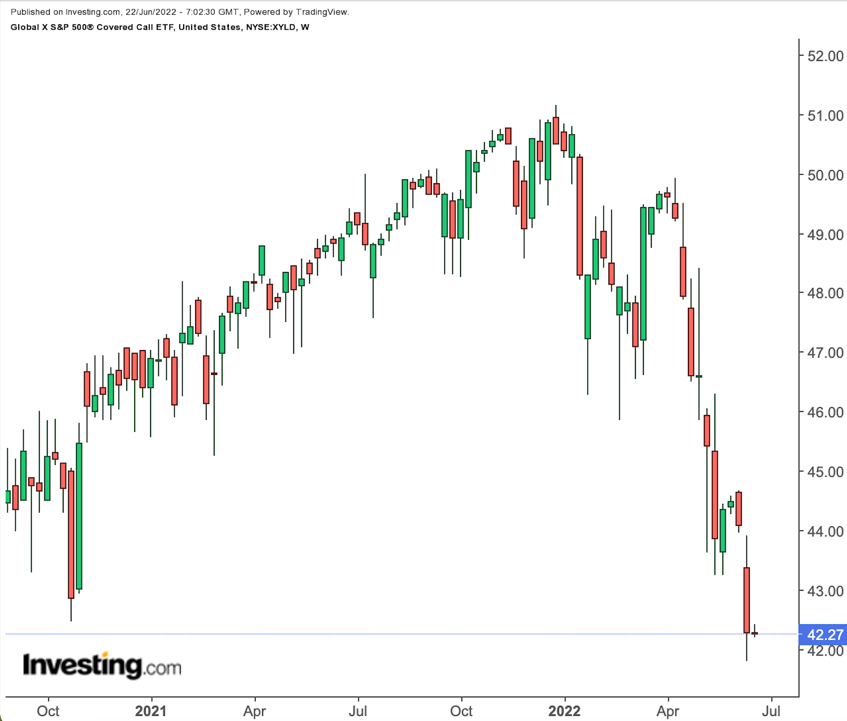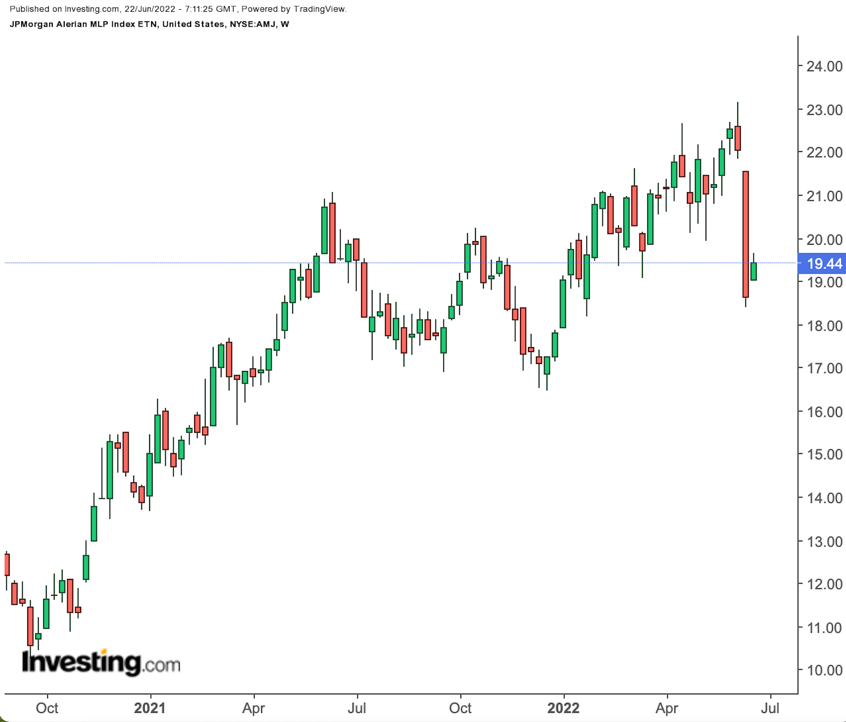Keeping pace with high inflation has undoubtedly been among the greatest concerns for stock investors this year. In May, the cost of living, as measured by the consumer price index, rose by 8.6%, a fresh four-decade high.
As a result, the Federal Reserve boosted interest rates by 0.75%—the highest rate hike since 1994. Fed Chair Jerome Powell also signaled more rate hikes throughout 2022.
Meanwhile, the sharp increase in bond yields and growing concerns over a potential recession have meant more headwinds for many stocks. Yet, not all sectors or asset classes necessarily suffer under inflationary times.
For instance, between 1973 and 2020, the energy industry, including oil and gas companies, "beat inflation 71% of the time and delivered a real annual return of 9.0% per year on average." Metrics suggest other sectors that may do well include real estate, consumer staples, financials, utilities, healthcare, industrials, and materials.
With that information, here are two income-generating ETFs to consider that may be of interest in the second half of 2022.
1. Global X S&P 500 Covered Call ETF
- Current Price: $42.27
- 52-week range: $41.79 - $51.16
- Distribution Yield: 11.71%
- Expense ratio: 0.60% per year
ETFs that follow a "covered call" or "buy-write" strategy have been gaining popularity, especially among investors looking to maximize yield amid volatility. Regular followers of this column would know that we frequently discuss such funds, especially on single stocks.
A covered call ETF sells call options on assets it holds to generate premium income. In other words, the strategy sells potential upside capital growth for immediate cash.
This strategy may be ideal in a sideways trading market or for investors requiring a steady monthly income. In declining markets, such a strategy also helps decrease portfolio volatility.
Today's first fund, the Global X S&P 500 Covered Call ETF (NYSE:XYLD), offers a covered call overlay against the stocks in the S&P 500 Index. Put another way, it buys the shares of the companies in the index and sells their call options.
XYLD started trading in June 2013, and net assets stand at $1.6 billion. It saw a 52-week low on June 17, falling around 17% from a multi-year high hit in late December 2021.
The fund is down 13.4% in the past 12 months, but the monthly distribution yield stands at 11.7%. By comparison, the S&P 500 has lost 10.8% in the past year, but the current dividend yield is 1.6%.
XYLD may appeal to passive income seekers who do not want to manage such options positions on individual shares.
2. JPMorgan Alerian MLP Index ETN
- Current Price: $19.44
- 52-week range: $16.47 - $23.16
- Yield: 8.87%
- Expense ratio: 0.85%
Master Limited Partnerships, or MLPs, process, produce, transport, or store natural resources. This fee-based business model says:
"The historical average yield of MLPs over the past 10 years has been around 8%."
Next on today's list is the JPMorgan Alerian MLP Index ETN (NYSE:AMJ). This exchange-traded note (ETN) provides exposure to North American midstream energy MLPs. It pays a variable quarterly coupon linked to the cash distributions paid on the MLPs in the underlying index.
AMJ, which was first listed in April 2009, has 24 stocks. It tracks the returns of the Alerian MLP Index.
The top ten names in the benchmark portfolio weigh around 65%. Leading names include Magellan Midstream Partners LP (NYSE:MMP), Enterprise Products Partners LP (NYSE:EPD), Energy Transfer LP (NYSE:ET), MPLX LP (NYSE:MPLX), and Plains All American Pipeline LP (NASDAQ:PAA).
AMJ has returned more than 9% since January and hit a multi-year high on June 8. The yield is around 8.5%. Readers seeking to benefit from the energy sector while generating excess returns amid rising inflation could consider buying AMJ.
Finally, potential investors should know that, unlike an ETF that typically holds assets, an ETN is an unsecured debt security. It is issued by a bank that promises to pay at maturity based upon an index. Thus, an ETN is well exposed to the default risk of the issuer, i.e., JPMorgan Chase (NYSE:JPM), the largest US bank by assets.
